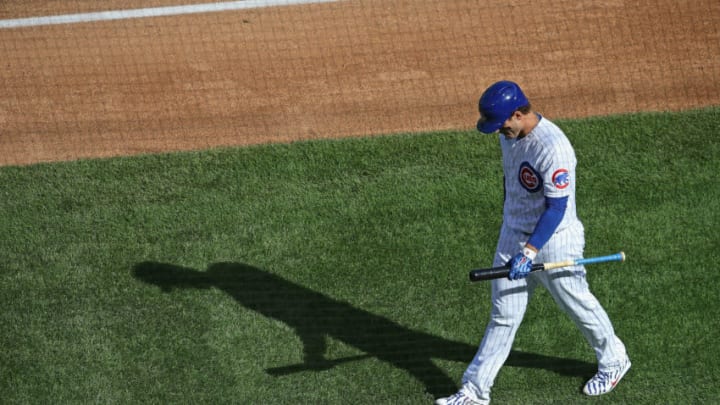One week into the 2021 season, the dimensionality of the Chicago Cubs offense is becoming obvious. That dimensionality is flat.
The Cubs can hit home runs. They hit three of them during a 4-2 victory Thursday in Pittsburgh. Indeed, when the Cubs win, that’s virtually all they do. Conversely, when the Cubs lose – they’re 4-3 – they don’t even do that, which means they don’t do anything.
Chicago Cubs one dimensional offense holding them back
How flat, how one-dimensional has the offense been? The Cubs have to date scored 23 runs, a dozen of them – that’s 52 percent – coming across on the team’s 10 homers. Of the 18 runs they’ve scored in those four victories, 11 scored on four-baggers. They’ve scored only five times in their three defeats with only one home run.
Entering play Friday, the Cubs offense had generated only seven runs all season that were not the result of a home run, a defensive assist – error, wild pitch — or in extra innings. They were carrying a string of 29 consecutive innings without a run scoring due to either a home run or an extra inning assist.
That is pancake-level flat.
During spring training, Cubs manager David Ross made a frequent point of seeking greater dimensionality to Chicago’s approach to offense. He wanted more contact, more balls in play, even at the risk of fewer homers. To date, that ain’t happening.
Cubs hitters have struck out 60 times. That’s above the major league average, although not alarmingly so. Their seven home runs is precisely at the MLB average.
The problem lies in what happens when Cubs hitters don’t do either of those two things. What happens is nothing much. The Cubs have a .124 team batting average, 30th in MLB. Their .258 on base average ranks 28th, as does their .290 slugging average.
They have accumulated just 49 total bases – that’s an average of just seven per game – again 28th in MLB. They have just 15 singles – about two per game.
For context, during the last full season, 2019, major league teams averaged about 15 total bases per game, about 5.3 of them coming on singles. The worst team in baseball at that trait, the Miami Marlins, averaged just under 13 total bases per game.
The highest percentage of home runs per hit in 2019 was 20 percent, by both the Minnesota Twins and New York Yankees. The problem is those teams also ranked second and sixth respectively in total hits. The Cubs’ seven homers amount to one-third of their total hit production. But with just 21 total base hits to date, they are tied for last in base hit production.
In the team’s three defeats, they have allowed an average of just 4.33 runs per game. That’s below the 4.55 run per game major league are averaging in both wins and losses to date.
Obviously, it is early in the season, and over time the percentages, anyway, will ameliorate. The question is the overall productivity of the offense. If that offense continues to be relatively flat and one-dimensional, it is difficult to project the Chicago Cubs remaining in contention even in the modestly talented NL Central.
